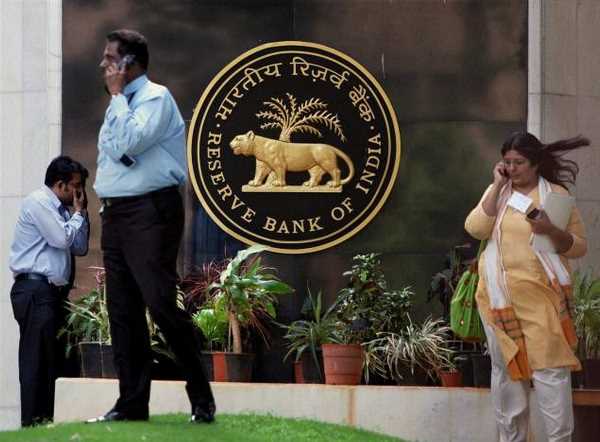The RBI wants the yields to remain at 6 per cent, but bond dealers say the central bank will have to step up its bond-buying programme.
The bond market is not in a mood to reason with the Reserve Bank of India (RBI) on keeping yields low.
The 10-year bond yields continued to rise for the fourth straight session to close at 6.202 per cent from its previous close of 6.135 per cent.
The yield was at 6 per cent a week ago.
The RBI wants the yields to remain at 6 per cent, but bond dealers say the central bank will have to step up its bond-buying programme.
A section of the market also says the RBI should not hurry in normalising its liquidity operations because that is scaring bond market participants, even as excess liquidity in the system is nearly Rs 6 trillion.
The RBI has been devolving auctions, or forcing underwriters of bonds to buy the bonds, or even cancelling auctions to check yields.
However, those actions are not having the desired effect.
The bond market demands more open market operations (OMO) from the RBI, but with so much liquidity around, the space for a huge OMO is also getting constrained.
At the same time, a section of the bond market is suggesting that the RBI should stop the variable reverse repo auctions, through which it absorbed Rs 2 trillion of liquidity at just 3.55 per cent.
The money, they argue, could have been better used in buying bonds when it is largely left to domestic investors to participate in the bond auctions.
To partially solve the auction devolvement problem, the RBI on Monday said it would conduct an auction of Rs 24,000 crore on Friday, where out of four bonds, bidding for the one maturing in 2035 will be done on a “uniform” price auction method, instead of a multiple price method.
In uniform price auctions, the bidders beyond a cut-off are allotted bonds at the same rate, whereas in multiple price auctions, bidders get what they bid at.
This reduces uncertainty in the minds of the bidders, who can now bid at closer to market rates.
“By allowing uniform pricing for the belly of the curve, the RBI is trying to alleviate extra fear from bidders.
“This should narrow the spread between secondary market prices and bidding in the primary auction,” said Soumyajit Niyogi, associate director at India Ratings and Research.
The devolvement of auctions is hitting primary dealers, the least capitalised section of the market, the hardest.
The underwriting commission to primary dealers has gone up 40 times, but they are still staring at a loss without the RBI’s support in buying the devolved bonds back from them through OMOs.
Cancelling auctions and devolving on primary dealers is giving contrary messages to the bond market, said Joydeep Sen, consultant (fixed income), Philip Capital.
“Rate cuts are off the table and other RBI support measures are the only thing to look forward to.
“Apart from this, the market is expecting an OMO purchase calendar, as a commitment from the RBI.
“Moreover, US treasury yields are moving up and global commodity prices are looking upwards, having a sentimental impact on the local bonds here,” said Sen.
Even as the central bank devolved more than Rs 20,000 crore bonds in an auction last week, for this week it neither announced an OMO nor intervened in the secondary market.
Between February 8 and February 14, the RBI had bought bonds worth Rs 50,169 crore from the markets.
According to Jayesh Mehta, head of treasury at Bank of America, if there is no plan to announce OMOs, the RBI should let the auctions go through without devolvement, albeit at a slightly higher yield.
“Because of our current market structure, where the primary investors are only banks, insurance companies and provident funds, whenever the fiscal deficit crosses 4.5-5 per cent, the central bank will have to buy bonds.
“However, this bond buying can be done in a more tactical way so that the market gets confidence,” Mehta said.
State Bank of India chief economic advisor Soumyakanti Ghosh suspects there could be short-selling involved in bonds and the RBI must step forward to discourage this.
Photograph: PTI Photo
Source: Read Full Article


